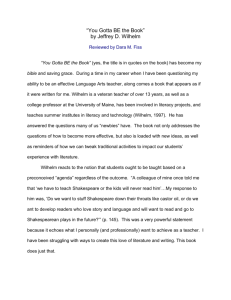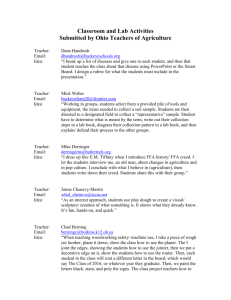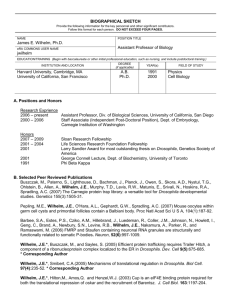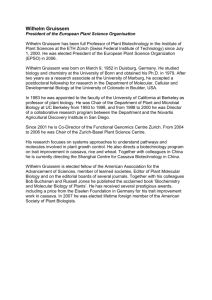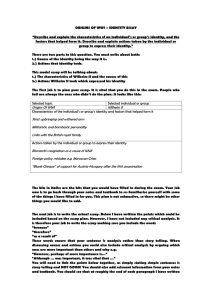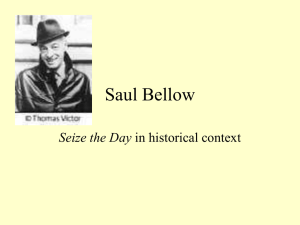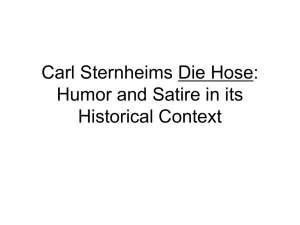whole article
advertisement
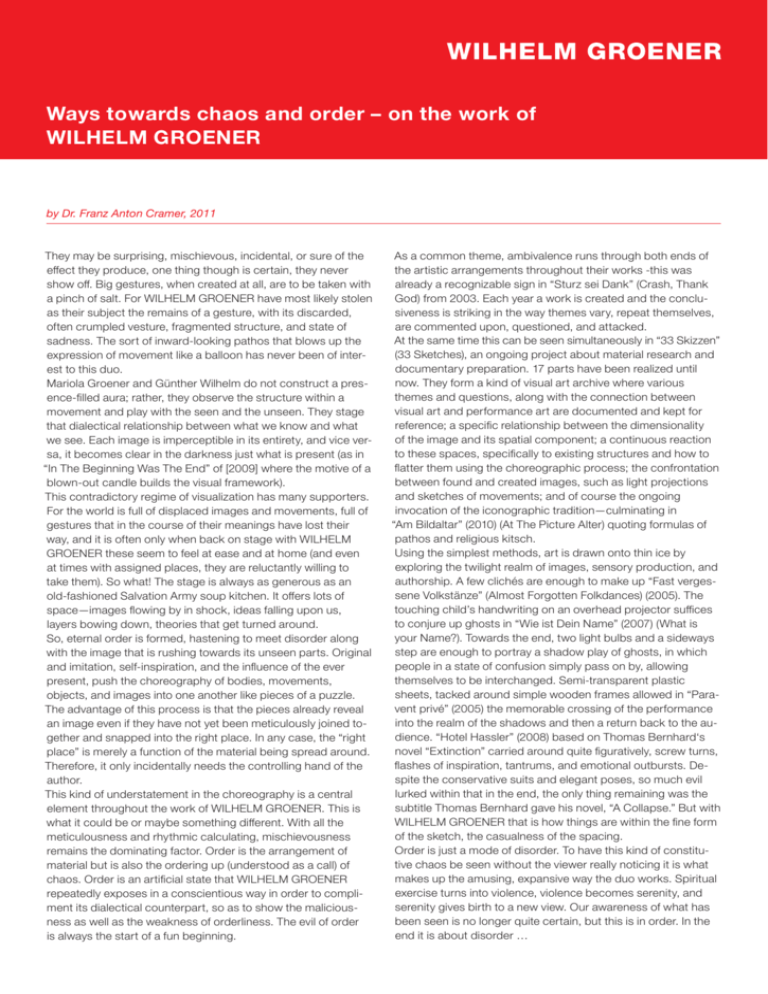
Ways towards chaos and order – on the work of WILHELM GROENER by Dr. Franz Anton Cramer, 2011 They may be surprising, mischievous, incidental, or sure of the effect they produce, one thing though is certain, they never show off. Big gestures, when created at all, are to be taken with a pinch of salt. For WILHELM GROENER have most likely stolen as their subject the remains of a gesture, with its discarded, often crumpled vesture, fragmented structure, and state of sadness. The sort of inward-looking pathos that blows up the expression of movement like a balloon has never been of interest to this duo. Mariola Groener and Günther Wilhelm do not construct a presence-filled aura; rather, they observe the structure within a movement and play with the seen and the unseen. They stage that dialectical relationship between what we know and what we see. Each image is imperceptible in its entirety, and vice versa, it becomes clear in the darkness just what is present (as in “In The Beginning Was The End” of [2009] where the motive of a blown-out candle builds the visual framework). This contradictory regime of visualization has many supporters. For the world is full of displaced images and movements, full of gestures that in the course of their meanings have lost their way, and it is often only when back on stage with WILHELM GROENER these seem to feel at ease and at home (and even at times with assigned places, they are reluctantly willing to take them). So what! The stage is always as generous as an old-fashioned Salvation Army soup kitchen. It offers lots of space—images flowing by in shock, ideas falling upon us, layers bowing down, theories that get turned around. So, eternal order is formed, hastening to meet disorder along with the image that is rushing towards its unseen parts. Original and imitation, self-inspiration, and the influence of the ever present, push the choreography of bodies, movements, objects, and images into one another like pieces of a puzzle. The advantage of this process is that the pieces already reveal an image even if they have not yet been meticulously joined together and snapped into the right place. In any case, the “right place” is merely a function of the material being spread around. Therefore, it only incidentally needs the controlling hand of the author. This kind of understatement in the choreography is a central element throughout the work of WILHELM GROENER. This is what it could be or maybe something different. With all the meticulousness and rhythmic calculating, mischievousness remains the dominating factor. Order is the arrangement of material but is also the ordering up (understood as a call) of chaos. Order is an artificial state that WILHELM GROENER repeatedly exposes in a conscientious way in order to compliment its dialectical counterpart, so as to show the maliciousness as well as the weakness of orderliness. The evil of order is always the start of a fun beginning. As a common theme, ambivalence runs through both ends of the artistic arrangements throughout their works -this was already a recognizable sign in “Sturz sei Dank” (Crash, Thank God) from 2003. Each year a work is created and the conclusiveness is striking in the way themes vary, repeat themselves, are commented upon, questioned, and attacked. At the same time this can be seen simultaneously in “33 Skizzen” (33 Sketches), an ongoing project about material research and documentary preparation. 17 parts have been realized until now. They form a kind of visual art archive where various themes and questions, along with the connection between visual art and performance art are documented and kept for reference; a specific relationship between the dimensionality of the image and its spatial component; a continuous reaction to these spaces, specifically to existing structures and how to flatter them using the choreographic process; the confrontation between found and created images, such as light projections and sketches of movements; and of course the ongoing invocation of the iconographic tradition—culminating in “Am Bildaltar” (2010) (At The Picture Alter) quoting formulas of pathos and religious kitsch. Using the simplest methods, art is drawn onto thin ice by exploring the twilight realm of images, sensory production, and authorship. A few clichés are enough to make up “Fast vergessene Volkstänze” (Almost Forgotten Folkdances) (2005). The touching child’s handwriting on an overhead projector suffices to conjure up ghosts in “Wie ist Dein Name” (2007) (What is your Name?). Towards the end, two light bulbs and a sideways step are enough to portray a shadow play of ghosts, in which people in a state of confusion simply pass on by, allowing themselves to be interchanged. Semi-transparent plastic sheets, tacked around simple wooden frames allowed in “Paravent privé” (2005) the memorable crossing of the performance into the realm of the shadows and then a return back to the audience. “Hotel Hassler” (2008) based on Thomas Bernhard‘s novel “Extinction” carried around quite figuratively, screw turns, flashes of inspiration, tantrums, and emotional outbursts. Despite the conservative suits and elegant poses, so much evil lurked within that in the end, the only thing remaining was the subtitle Thomas Bernhard gave his novel, “A Collapse.” But with WILHELM GROENER that is how things are within the fine form of the sketch, the casualness of the spacing. Order is just a mode of disorder. To have this kind of constitutive chaos be seen without the viewer really noticing it is what makes up the amusing, expansive way the duo works. Spiritual exercise turns into violence, violence becomes serenity, and serenity gives birth to a new view. Our awareness of what has been seen is no longer quite certain, but this is in order. In the end it is about disorder …
